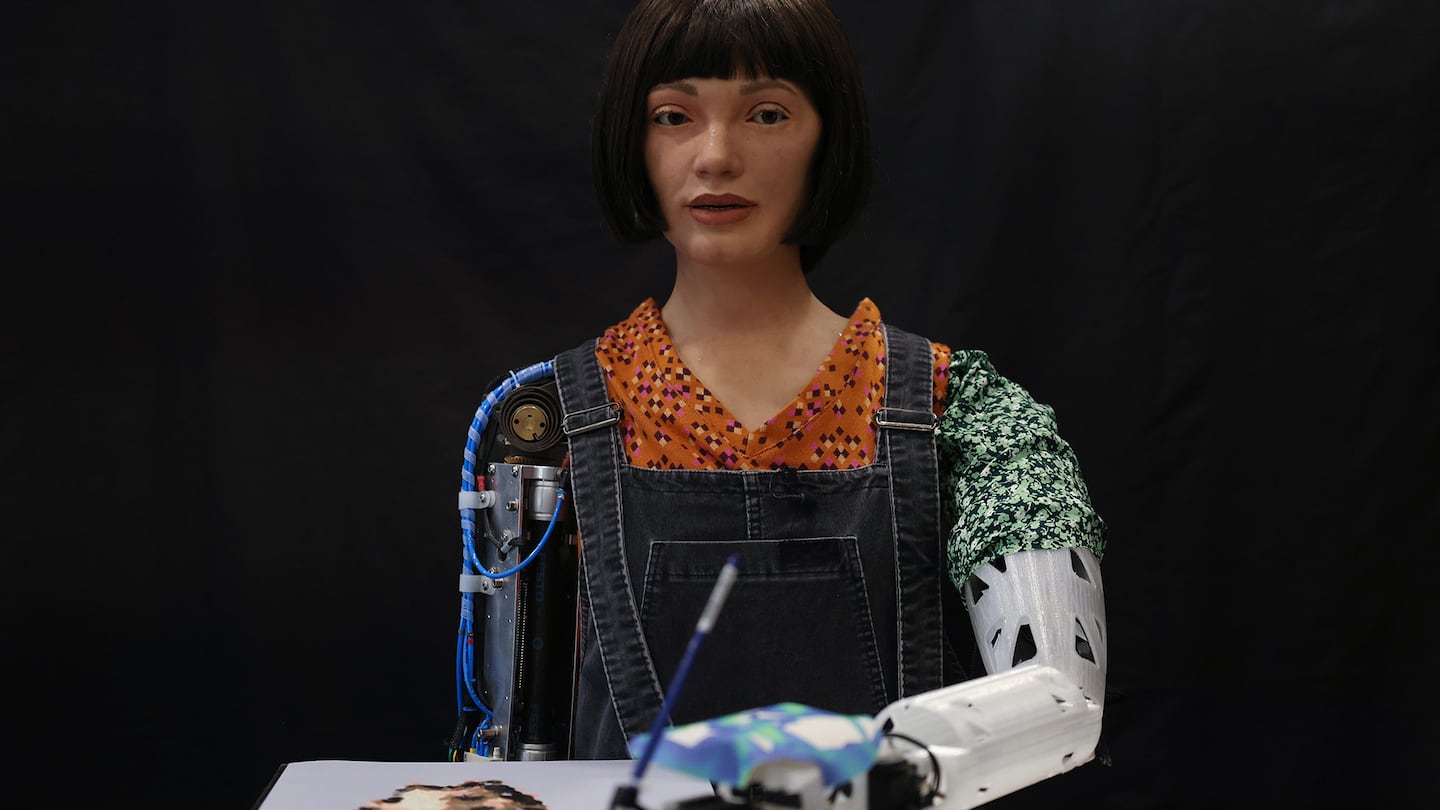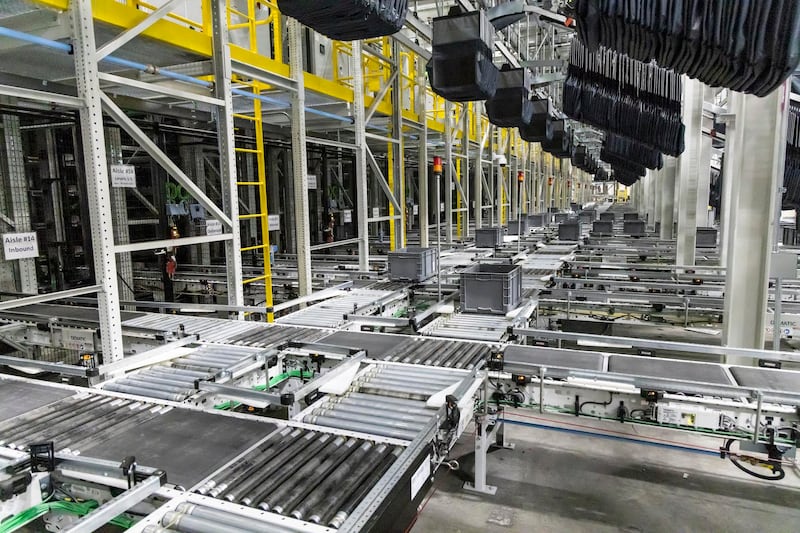
The Business of Fashion
Agenda-setting intelligence, analysis and advice for the global fashion community.

Agenda-setting intelligence, analysis and advice for the global fashion community.

“Laziness, cheapness and cynicism all in one stroke,” wrote American illustrator and film producer Peter Ramsey in a March 24 comment “liked” more than 4,000 times on Twitter.
It’s not exactly the feedback a brand wants to hear when it announces it’s taking a bet on a new technology.
But it’s just one of many negative comments across social media in response to denim maker Levi Strauss & Co. announcement last month that it would experiment with AI-generated fashion models on its website.
In its press release, Levi’s portrayed generative AI — a type of artificial intelligence that can create images, audio, video and text from user prompts — as a way to boost the diversity of models shoppers see. AI-generated “body-inclusive avatars,” the company said, would allow Levi’s to display “hyper-realistic models of every body type, age, size, and skin tone” on its website and do so more quickly than otherwise possible.
ADVERTISEMENT
The announcement did yield plenty of excitement from tech enthusiasts excited to see generative AI used in the real world. But Levi’s critics said the company appeared to be using AI as means to sidestep actual diversity — potentially yanking away job opportunities from minority models and exacerbating long-standing disparities in the fashion industry. The Cut headlined its story “Levi’s You Can Just … Hire Diverse Models?” The Guardian panned the technology itself, describing one AI model’s neck as “like a bad attempt at using FaceTune’s eraser effect to hide a double chin.”
In a statement on March 28 responding to the criticism, Levi’s said it would not “scale back” its use of human models and that it did not see the pilot “as a means to advance diversity or as a substitute for the real action that must be taken.”
“We realise there is understandable sensitivity around AI-related technologies, and we want to clarify that this pilot is something we are on track to experiment with later this year in the hopes of strengthening the consumer experience,” the company said.
Levi’s bumpy launch almost perfectly encapsulates the ethical and business questions many companies must tackle as the newest waves of artificial intelligence — most notably ChatGPT, a chatbot that can answer questions, write essays and even compose songs — gain momentum. AI’s proponents argue the technology can be a powerful tool to help brands cut costs, stay competitive and enhance the creativity and output of their teams. But there’s a darker scenario where companies bluntly employ AI as a one-to-one replacement for humans — veering into a whole host of ethical challenges while trading off many of the benefits of human creativity.
It’s a tricky topic that fashion and other industries have been grappling with off and on for decades, ever since the earliest wave of factory automation. There’s no straightforward answer to the question of just how much automation hurts or helps jobs. Research shows fears that a wave of automation will trigger mass unemployment are generally unfounded, with robots and AI both creating and eliminating employment opportunities. Who suffers or benefits can depend on anything from the country to the company as well as an employee’s education level and ethnicity.
Fashion usually isn’t the first industry to embrace new technologies. But companies need to start thinking about their approach to automation while new uses for AI are in their experimental stage, experts say.
“Innovation can happen quickly in the [retail] environment and we have a responsibility to educate individuals on how to elevate their roles and train them into other positions quickly,” said Greg Petro, founder and chief executive of First Insight, a digital platform that uses AI to test products for brands and retailers. “But trying to diminish the productivity potential and the innovation it could bring is only going to handicap companies.”
Many fashion companies already employ some form of artificial intelligence and automation in their day-to-day operations — mainly in areas such as supply chain and customer service.
ADVERTISEMENT
Unlike earlier forms of automation (self-checkout machines in grocery stores are one example), the most controversial recent AI development, ChatGPT, is expected to impact mostly white collar jobs in areas like data analysis, legal, finance, media and content creation. As many as 300 million full-time jobs around the world could be impacted – though not necessarily eliminated – by ChatGPT-like automation, according to a Goldman Sachs report released last week.
Fashion companies will likely gravitate first towards using ChatGPT or similar programmes on the “customer engagement side,” including customer service and support for online interactions and even clienteling, Petro said.
Looking a bit further out, roles in areas like marketing, copywriting, merchandising, design and content creation could see a shift in both the number of available jobs as well as in the “nature of how the jobs are performed,” said Rohan Deuskar, founder and chief executive of Stylitics, a platform that uses AI to create outfitting, styling, and gifting programmes for brands and retailers like Puma, Revolve, Macy’s and Kohl’s.
For instance, an AI tool could handle “low-stakes” tasks like sorting through thousands of products and quickly spitting out product descriptions and outfit ideas to use on a brand’s website, Deuskar said. For designers, automation could take on repetitive tasks like taking measurements or entering garment specifications into a database.
Taking out the “crummy, laborious and manual parts,” leaves the merchant or designer to focus on more creative — or “high-stakes” — exercises like dreaming up the vision for a brand or product, he said.
But, if it was someone’s job entirely to do these sorts of things — manually creating imagery or writing a product description — “they may be left behind,” said Deuskar.
The best case scenario, experts say, is that artificial intelligence complements and enhances employees’ performance and that companies are conscious of how automating certain tasks will affect their internal culture, as well as the diversity of their workforce.
In 2020, when Nordstrom opened its new West Coast Omni Centre — a distribution centre that fulfills customer and store orders — the retailer tricked out the facility with robotics and other tech upgrades, which automated tasks like retrieving products and transporting them through the facility as well as sorting packages. The result, the company said, is that items move more quickly through the facility and customers receive merchandise faster than when products are shipped from its “traditional” (less automated) distribution centres.
ADVERTISEMENT
Its employees, Nordstrom said, can then focus on “customer-oriented actions” like “quality [and] accuracy.”

One way companies can introduce new automation to their workforce and ensure employee buy-in is by surveying their staffers to find out “what are … the things they don’t actually want to do,” Deuskar said.
In general, companies shouldn’t flock to every new technology model promising cost savings or amped up efficiencies, experts say.
For employees who worry their job may be at risk, it might be helpful to create a list of 10 or so things they spend the most time on, and identify which of those are most vulnerable to automation, Petro said.
“From there, refocus on getting better at the things that won’t be going away,” he said.
That might mean getting trained up on using AI, too.
“In the next couple of years, the people who know how to use those tools will be ready for the next phase of work,” he said.
Companies are increasingly finding that the best way to sidestep deficits in knowledge and experience among recent college graduates and veteran employees is to play a more active role in the education process.
The denim giant says it will experiment with supplementing its human models with AI-generated models later this year.

Sheena Butler-Young is Senior Correspondent at The Business of Fashion. She is based in New York and covers workplace, talent and issues surrounding diversity and inclusion.
Discover the most exciting career opportunities now available on BoF Careers — including jobs from Gucci, Simone Rocha and Bloomingdale’s.
BoF spoke to HR executives and talent experts at Alexander McQueen, On and Deckers Brands — global employers currently recruiting on BoF Careers — to understand what skills are most relevant to the fashion industry and how to upskill in them in the workplace.
The nature of working in retail is changing at pace as the purpose of stores continues to evolve. BoF Careers examines how in-store employees can hone and develop their skill sets for success in retail or its adjacent industries, sharing expertise from retail leaders and fashion executives who began their careers on the shop floor.
A tailored recruitment service offering specialist support to secure top-tier executive talent for your open roles across fashion, retail, luxury and beauty.